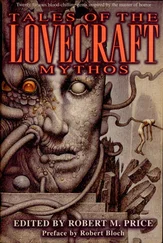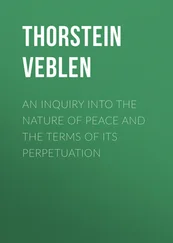Robert Pirsig - Lila. An Inquiry Into Morals
Здесь есть возможность читать онлайн «Robert Pirsig - Lila. An Inquiry Into Morals» весь текст электронной книги совершенно бесплатно (целиком полную версию без сокращений). В некоторых случаях можно слушать аудио, скачать через торрент в формате fb2 и присутствует краткое содержание. Жанр: Современная проза, на английском языке. Описание произведения, (предисловие) а так же отзывы посетителей доступны на портале библиотеки ЛибКат.
- Название:Lila. An Inquiry Into Morals
- Автор:
- Жанр:
- Год:неизвестен
- ISBN:нет данных
- Рейтинг книги:3 / 5. Голосов: 1
-
Избранное:Добавить в избранное
- Отзывы:
-
Ваша оценка:
- 60
- 1
- 2
- 3
- 4
- 5
Lila. An Inquiry Into Morals: краткое содержание, описание и аннотация
Предлагаем к чтению аннотацию, описание, краткое содержание или предисловие (зависит от того, что написал сам автор книги «Lila. An Inquiry Into Morals»). Если вы не нашли необходимую информацию о книге — напишите в комментариях, мы постараемся отыскать её.
Lila. An Inquiry Into Morals — читать онлайн бесплатно полную книгу (весь текст) целиком
Ниже представлен текст книги, разбитый по страницам. Система сохранения места последней прочитанной страницы, позволяет с удобством читать онлайн бесплатно книгу «Lila. An Inquiry Into Morals», без необходимости каждый раз заново искать на чём Вы остановились. Поставьте закладку, и сможете в любой момент перейти на страницу, на которой закончили чтение.
Интервал:
Закладка:
But although the four systems are exhaustive they are not exclusive. They all operate at the same time and in ways that are almost independent of each other.
This classification of patterns is not very original, but the Metaphysics of Quality allows an assertion about them that is unusual. It says they are not continuous. They are discreet. They have very little to do with one another. Although each higher level is built on a lower one it is not an extension of that lower level. Quite the contrary. The higher level can often be seen to be in opposition to the lower level, dominating it, controlling it where possible for its own purposes.
This observation is impossible in a substance-dominated metaphysics where everything has to be an extension of matter. But now atoms and molecules are just one of four levels of static patterns of quality and there is no intellectual requirement that any level dominate the other three.
An excellent analogy to the independence of the levels, Phædrus thought, is the relation of hardware to software in a computer. He had learned something about this relationship when for several years he wrote technical manuals describing complex military computers. He had learned how to troubleshoot computers electronically. He had even wired up some of his own digital circuits which, in those days before integrated circuit chips, were composed of independent transistors, diodes, resistors and capacitors all held together with wire and solder. But after four years in which he had acquired all this knowledge he had only the vaguest idea of what a program was. None of the electrical engineers he worked with had anything to do with programs. Programmers were off in another building somewhere.
Later, when he got into work with programmers, he discovered to his surprise that even advanced programmers seldom knew how a flip-flop worked. That was amazing. A flip-flop is a circuit that stores a 1 or a 0 . If you don’t know how a flip-flop works, what do you know about computers?
The answer was that it isn’t necessary for a programmer to learn circuit design. Neither is it necessary for a hardware technician to learn programming. The two sets of patterns are independent. Except for a memory map and a tiny isthmus of information called the Machine Language Instruction Repertoire — a list so small you could write it on a single page — the electronic circuits and the programs existing in the same computer at the same time have nothing whatsoever to do with each other.
The Machine Language Instruction Repertoire fascinated Phædrus because he had seen it from such different perspectives. He had written hardware descriptions of many hundreds of blueprints showing how voltage levels were transferred from one bank of flip-flops to another to create a single machine language instruction. These machine language instructions were the final achievement toward which all the circuits aimed. They were the end performance of a whole symphony of switching operations.
Then when he got into programming he found that this symphony of electronic circuits was considered to be a mere single note in a whole other symphony that had no resemblance to the first one. The gating circuits, the rise and decay times, the margins for voltage levels, were gone. Even his banks of flip-flops had become registers. Everything was seen from a pure and symbolic world of logical relationships that had no resemblance at all to the real world he had worked in. The Machine Language Instruction Repertoire, which had been the entire design goal, was now the lowest element of the lowest level programming language. Most programmers never used these instructions directly or even knew what they meant.
Although both the circuit designer and the programmer knew the meaning of the instruction, Load Accumulator, the meaning that each knew was entirely different from the other’s. Their only relationship was that of analogy. A register is analogous to a bank of flip-flops. A change in voltage level is analogous to a change in number. But they are not the same. Even in this narrow isthmus between these two sets of static patterns called hardware and software there was still no direct interchange of meaning. The same machine language instruction was a completely different entity within two different sets of patterns.
On top of this low-level programming language was a high-level programming language, FORTRAN or COBOL in those days, which had the same kind of independence from the low-level language that the low-level language had from electronic circuits. And on top of the high-level language was still another level of patterns, the application, a novel perhaps in a word-processing program. And what amazed him most of all was how one could spend all of eternity probing the electrical patterns of that computer with an oscilloscope and never find that novel.
What makes all this significant to the Metaphysics of Quality is its striking parallelism to the interrelationship of different levels of static patterns of quality.
Certainly the novel cannot exist in the computer without a parallel pattern of voltages to support it. But that does not mean that the novel is an expression or property of those voltages. It doesn’t have to exist in any electronic circuits at all. It can also reside in magnetic domains on a disk or a drum or a tape, but again it is not composed of magnetic domains nor is it possessed by them. It can reside in a notebook but it is not composed of or possessed by the ink and paper. It can reside in the brain of a programmer, but even here it is neither composed of this brain nor possessed by it. The same program can be made to run on an infinite variety of computers. A program can change itself into a different program while it is running. It can turn on another computer, transfer itself into this second computer and shut off the first computer that it came from, destroying every last trace of its origins — a process with similarities to biological reproduction.
Trying to explain social moral patterns in terms of inorganic chemistry patterns is like trying to explain the plot of a word-processor novel in terms of the computer’s electronics. You can’t do it. You can see how the circuits make the novel possible, but they do not provide a plot for the novel. The novel is its own set of patterns. Similarly the biological patterns of life and the molecular patterns of organic chemistry have a machine language interface called DNA but that does not mean that the carbon or hydrogen or oxygen atoms possess or guide life. A primary occupation of every level of evolution seems to be offering freedom to lower levels of evolution. But as the higher level gets more sophisticated it goes off on purposes of its own.
Once this independent nature of the levels of static patterns of value is understood a lot of puzzles get solved. The first one is the usual puzzle of value itself. In a subject-object metaphysics, value has always been the most vague and ambiguous of terms. What is it? When you say the world is composed of nothing but value, what are you talking about?
Phædrus thought this was why no one before had ever seemed to have come up with the idea that the world is primarily value. The word is too vague. The value that holds a glass of water together and the value that holds a nation together are obviously not the same thing. Therefore to say that the world is nothing but value is just confusing, not clarifying.
Now this vagueness is removed by sorting out values according to levels of evolution. The value that holds a glass of water together is an inorganic pattern of value. The value that holds a nation together is a social pattern of value. They are completely different from each other because they are at different evolutionary levels. And they are completely different from the biological pattern that can cause the most sceptical of intellectuals to leap from a hot stove. These patterns have nothing in common except the historic evolutionary process that created all of them. But that process is a process of value evolution. Therefore the name static pattern of values applies to all.
Читать дальшеИнтервал:
Закладка:
Похожие книги на «Lila. An Inquiry Into Morals»
Представляем Вашему вниманию похожие книги на «Lila. An Inquiry Into Morals» списком для выбора. Мы отобрали схожую по названию и смыслу литературу в надежде предоставить читателям больше вариантов отыскать новые, интересные, ещё непрочитанные произведения.
Обсуждение, отзывы о книге «Lila. An Inquiry Into Morals» и просто собственные мнения читателей. Оставьте ваши комментарии, напишите, что Вы думаете о произведении, его смысле или главных героях. Укажите что конкретно понравилось, а что нет, и почему Вы так считаете.











